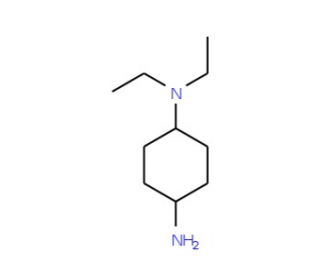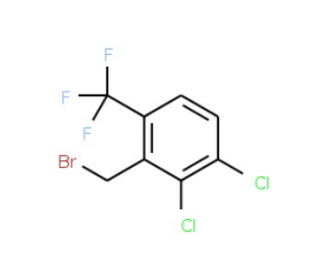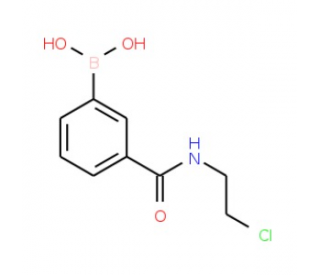详细说明
Purity
>97%, by SDS-PAGE visualized with Silver Staining and quantitative densitometry by Coomassie® Blue Staining.
Endotoxin Level
<1.0 EU per 1 μg of the protein by the LAL method.
Activity
Measured in a cell proliferation assay using PHA-stimulated human T lymphoblasts. Symons, J.A. et al. (1987) in Lymphokines and Interferons, a Practical Approach. Clemens, M.J. et al. (eds): IRL Press. 272. The ED 50 for this effect is 0.01-0.05 ng/mL.
The specific activity of Recombinant Human IL-12 is approximately 1.1 x 10 4 units/μg, which is calibrated against recombinant human IL-12 WHO Standard (NIBSC code: 95/544).
Source
Spodoptera frugiperda, Sf 21 (baculovirus)-derived
Human IL-12 p40
(Ile23-Ser328)
Accession # P29460Human IL-12 p35
(Arg23-Ser219)
Accession # P29459N-terminus C-terminus Accession #
N-terminal Sequence
AnalysisIle23 (p40) & Arg23 (p35)
Structure / Form
Disulfide-linked heterodimer
Predicted Molecular Mass
34.7 kDa (p40) & 22.5 kDa (p35)
SDS-PAGE
41 kDa (p40) & 29 kDa (p35), reducing conditions
Carrier Free
What does CF mean?
CF stands for Carrier Free (CF). We typically add Bovine Serum Albumin (BSA) as a carrier protein to our recombinant proteins. Adding a carrier protein enhances protein stability, increases shelf-life, and allows the recombinant protein to be stored at a more dilute concentration. The carrier free version does not contain BSA.
What formulation is right for me?
In general, we advise purchasing the recombinant protein with BSA for use in cell or tissue culture, or as an ELISA standard. In contrast, the carrier free protein is recommended for applications, in which the presence of BSA could interfere.
219-IL |
| 219-IL/CF |
Formulation Lyophilized from a 0.2 μm filtered solution in PBS with BSA as a carrier protein. | Formulation Lyophilized from a 0.2 μm filtered solution in PBS. | |
Reconstitution Reconstitute at 50 μg/mL in sterile PBS containing at least 0.1% human or bovine serum albumin. | Reconstitution Reconstitute 5 µg vials at 50 µg/mL in sterile PBS. Reconstitute 25 µg or larger vials at 100 µg/mL in sterile PBS. | |
Shipping The product is shipped at ambient temperature. Upon receipt, store it immediately at the temperature recommended below. | Shipping The product is shipped at ambient temperature. Upon receipt, store it immediately at the temperature recommended below. | |
Stability & Storage: Use a manual defrost freezer and avoid repeated freeze-thaw cycles.
| Stability & Storage: Use a manual defrost freezer and avoid repeated freeze-thaw cycles.
|
Data Images
Bioactivity
| Recombinant Human IL-12 (Catalog # 219‑IL) stimulates proliferation in PHA-activated human T lymphoblasts. The ED50 for this effect is 0.01-0.05 ng/mL. |
SDS-PAGE
| 1 µg/lane of Recombinant Human IL-12 was resolved with SDS-PAGE under reducing (R) and non-reducing (NR) conditions and visualized by silver staining. Single bands were observed at 41 kDa (p40) and 29 kDa (p35), under reducing conditions, and at 60 kDa under non-reducing conditions. |
Background: IL-12
Interleukin 12, also known as natural killer cell stimulatory factor (NKSF) or cytotoxic lymphocyte maturation factor (CLMF), is a pleiotropic cytokine originally identified in the medium of activated human B lymphoblastoid cell lines. The p40 subunit of IL-12 has been shown to have extensive amino acid sequence homology to the extracellular domain of the human IL-6 receptor while the p35 subunit shows distant but significant sequence similarity to IL-6, G-CSF, and chicken MGF. These observations have led to the suggestion that IL-12 might have evolved from a cytokine/soluble receptor complex. Human and murine IL-12 share 70% and 60% amino acid sequence homology in their p40 and p35 subunits, respectively. IL-12 apparently shows species specificity with human IL-12 reportedly showing minimal activity in the murine system.
IL-12 is produced by macrophages and B lymphocytes and has been shown to have multiple effects on T cells and natural killer (NK) cells. These effects include inducing production of IFN-gamma and TNF by resting and activated T and NK cells, synergizing with other IFN-gamma inducers at both the transcriptional and post-transcriptional levels. This interaction induces IFN-gamma gene expression, enhancing the cytotoxic activity of resting NK and T cells, inducing and synergizing with IL-2 in the generation of lymphokine-activated killer (LAK) cells, acting as a co-mitogen to stimulate proliferation of resting T cells, and inducing proliferation of activated T and NK cells. Current evidence indicates that IL‑12, produced by macrophages in response to infectious agents, is a central mediator of the cell‑mediated immune response by its actions on the development, proliferation, and activities of TH1 cells. In its role as the initiator of cell-mediated immunity, it has been suggested that IL-12 has therapeutic potential as a stimulator of cell-mediated immune responses to microbial pathogens, metastatic cancers, and viral infections such as AIDS.
Long Name:
Interleukin 12
Entrez Gene IDs:
3592 (Human); 16159 (Mouse); 84405 (Rat); 403977 (Canine); 493741 (Feline)
Alternate Names:
CLMF p35; CLMF1; Cytotoxic lymphocyte maturation factor 35 kDa subunit; IL-12 subunit p35; IL12; IL-12; IL-12, subunit p35; IL12A; interleukin 12, p35; interleukin 12A (natural killer cell stimulatory factor 1, cytotoxic lymphocytematuration factor 1, p35); interleukin-12 alpha chain; interleukin-12 subunit alpha; natural killer cell stimulatory factor 1, 35 kD subunit; NF cell stimulatory factor chain 1; NK cell stimulatory factor chain 1; NKSF1; p35










 粤公网安备44196802000105号
粤公网安备44196802000105号